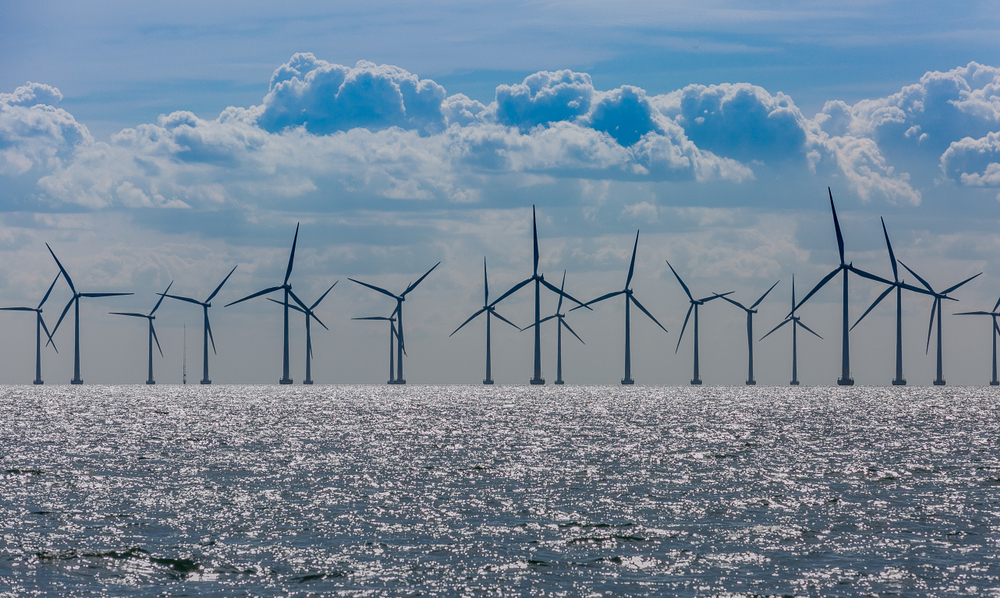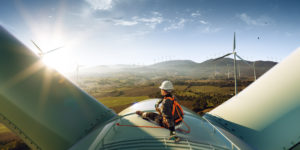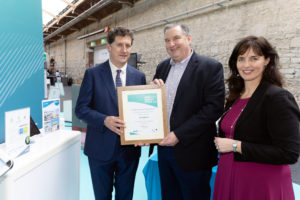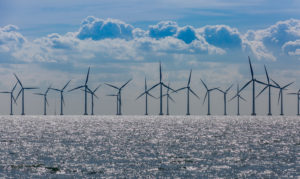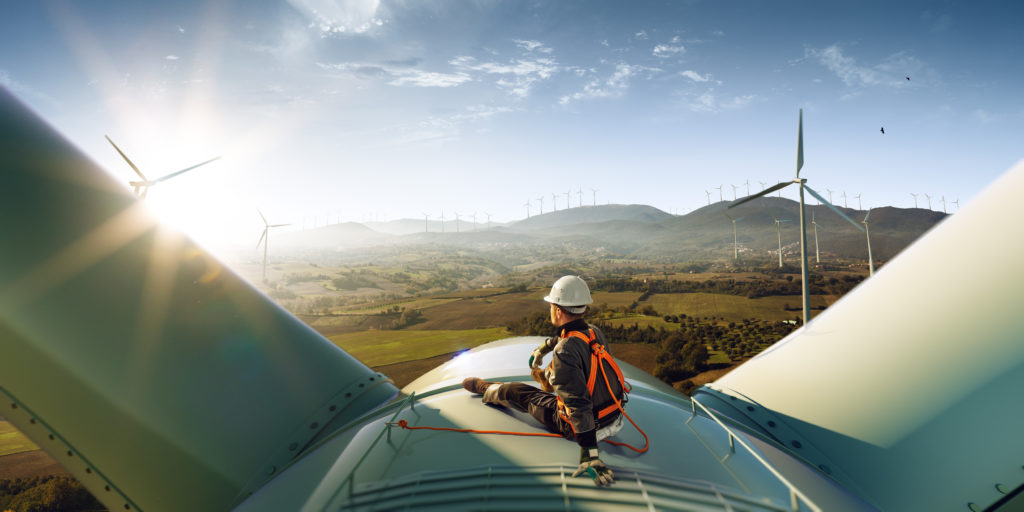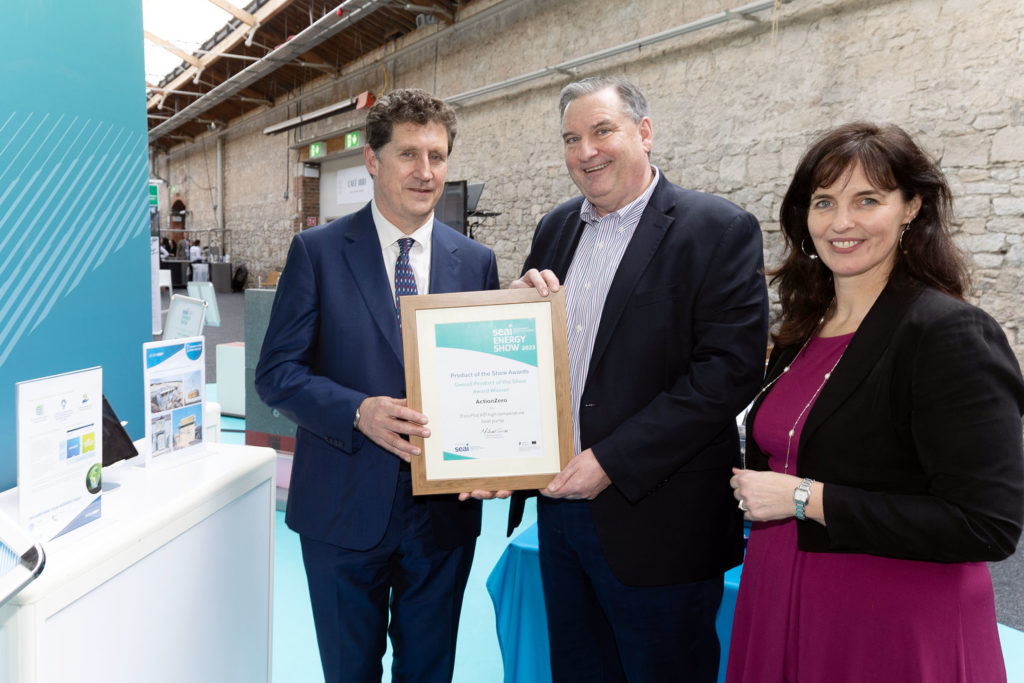ActionZero met with Professor Jerry Murphy, a leading thinker in renewable energy, to discuss the challenges preventing Ireland from being a global hub for offshore wind, and why it’s so important to Ireland’s net-zero future.
Offshore wind farms, as the name suggests, are large-scale turbine constructions mounted on floating platforms built out in the ocean. They’re connected to the onshore grid via high-voltage transmission lines and offer a cleaner way to generate power than burning fossil fuels.
They’re also key to Ireland’s plans to reach net zero carbon emissions by 2050. That’s according to Professor Jerry Murphy, Professor of Civil Engineering at University College Cork and a leading thinker in renewable energy.
“Ireland has set ambitious goals for renewable wind energy”, Professor Murphy says. “However in order to meet those targets, Ireland will need to hugely increase its production of wind electricity from offshore wind farms.”
The National Development Plan 2021 – 2030 pledges that at least 70% – and up to 80% – of Ireland’s electricity will be provided by renewable sources by 2030. For that goal to be met, it’s likely Ireland’s offshore wind capacity will need to increase from around 25 MW today to 5 GW in future – an increase of 200.
Ireland’s geographic position provides several deepwater locations along the south and west coasts which, when coupled with extremely high winds, put Ireland in the unique position of being a potential global leader in offshore wind technology.
But the level of planning in the Irish offshore wind sector doesn’t currently align with Ireland’s status as a potential global hub: “Meeting Ireland’s renewable energy targets is possible,” Professor Murphy says. “But right now, issues with the planning of offshore wind farms mean that it won’t be easy.”
“Ireland wants offshore wind”
While the island of Ireland has nearly 400 onshore wind farms currently in operation, offshore wind is more productive than land-based turbines. Greater access to stronger and more consistent winds, with higher capacity factors, and the ability to build turbines two or three times bigger, all contribute to the fact that offshore wind produces more energy, at a more consistent rate, than its onshore equivalent.
The further offshore the turbines can be placed, the more power can be generated from them, but according to Professor Murphy, there is currently no planning authority in place in Ireland to authorise the construction of wind turbines more than 12 nautical miles from shore. This puts Ireland at an immediate competitive disadvantage with regional neighbours in the UK and Scotland, both of whom have planning systems for similar constructions.
As well as helping Ireland meet its ambitious green energy targets, offshore wind could create thousands of direct and indirect jobs in the domestic supply chain, including in manufacturing, staging, installation, and operation maintenance. But none of that potential can be unlocked without the proper planning authority.
“Ireland wants offshore wind”, Professor Murphy says. “The Government is aiming for 70% of our overall energy production to be renewable by 2030, which much of that offshore, but there’s still no planning authority in place. That’s a problem.”
“Equinor, a leading floating offshore wind developer, probably left Ireland due to lack of a planning authority to facilitate offshore wind construction. Again, a problem.”
Planning is crucial to ambitious targets
While there are challenges involved in the construction of large-scale offshore wind farms, including electrical grid stability, the benefits far outweigh the costs: “We have so many natural resources in Ireland.” Professor Murphy says. “There are huge coastal areas where we can put up wind turbines that won’t be visible from shore and would help us generate large amounts of green hydrogen.”
Ireland’s ambitious climate targets, and the scale of the challenge we’re confronting in the looming climate crisis, means offshore wind shouldn’t be viewed as a single golden ticket to a sustainable future. It’s only one tool in a toolbox that will need to include sustainable aviation, greening the gas grid, and the decarbonisation of everything from Ireland’s agriculture sector to its manufacturing industry.
However, Professor Murphy maintains that getting plans for new offshore wind farms off the ground – and into the water – remains crucial. “The Government has interesting ideas.” Professor Murphy says. “It wants to massively increase electrification of energy from fuelling cars to heating houses, all of which is important. But none of it will be truly green as long as there is no planning system in place for wind turbines in the water.”
